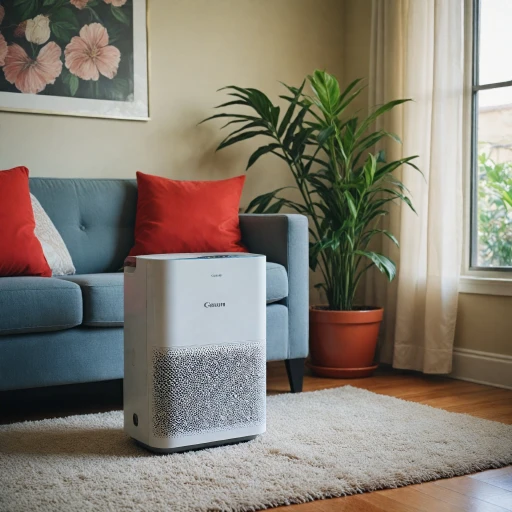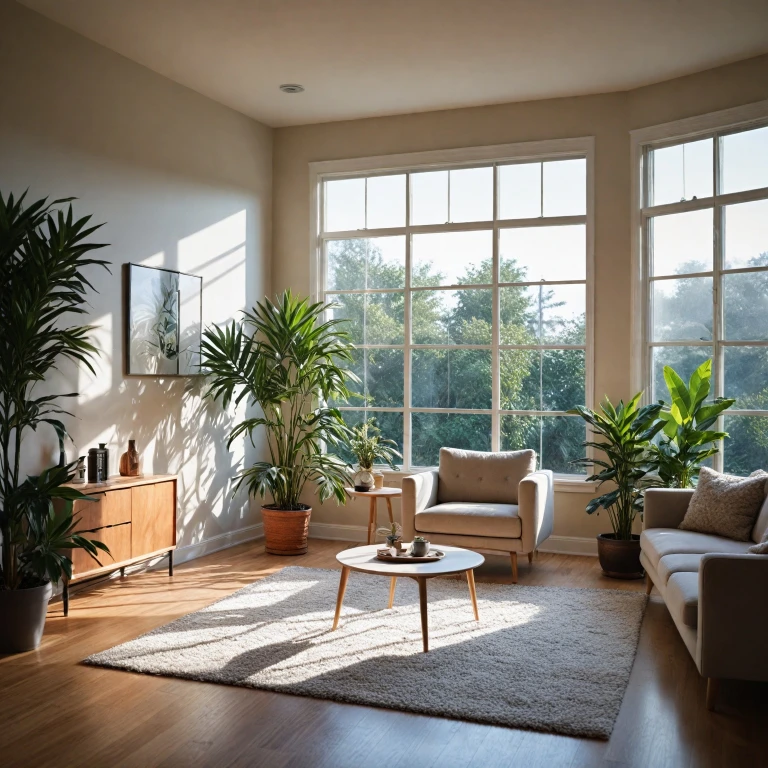Understanding Air Flow Dynamics
Grasping the Essentials of Air Flow
When it comes to optimizing the placement of your air purifier, understanding the dynamics of air flow is essential. Properly positioned, your purifier can significantly improve indoor air quality by targeting pollutants efficiently. Keep in mind that both clean air delivery and air pollution reduction hinge on strategic placement.
To achieve cleaner air in any room, it's crucial to acknowledge how air moves within the space. Consider the natural flow patterns created by doors, windows, and ventilation systems. These can either help or hinder the movement of clean air circulated by the purifier. By aligning the purifier with these air currents, you can enhance its effectiveness in capturing airborne particles.
Another factor to consider is the overall air circulation within the room. For instance, placing your air purifier near sources of pollution can ensure that harmful particles are filtered out quickly. This is especially important in rooms with high air pollution levels due to indoor activities like cooking or using household products.
For more insights on optimizing the location of your air purifier, especially to create a conducive environment for sleeping, you can explore this
guide for optimal placement in your bedroom. Each room's unique characteristics will dictate the best placement, ensuring that you can experience optimal air quality and healthier living spaces.
Common Mistakes in Air Purifier Placement
Avoiding Common Placement Pitfalls
Placing your air purifier in the right spot can significantly impact its efficiency. However, there are several errors that people commonly make when setting up these devices. By ensuring your purifier is correctly placed, you will benefit from cleaner air and improved air quality in your home.
- Avoid tight spaces: Many individuals make the mistake of placing air purifiers in corners or enclosed spaces. This can restrict the airflow, preventing the purifier from effectively circulating air. It is ideal to give your device some space from walls and furniture to allow unobstructed air circulation.
- Stay clear of electronic interference: Electrical devices such as televisions and computers can create electromagnetic interference. Ensuring your air purifier is placed away from such gadgets can prevent interference with its performance and thereby enhance its function in cleaning air pollutants.
- Watch out for heat sources: Another common mistake is placing air purifiers too close to heat sources like radiators or heaters. Heat can affect the purifier's efficiency and reduce the lifespan of its filters.
- Be mindful of windows and doors: Placing air purifiers near windows or doors can limit their effectiveness due to drafts that disrupt air circulation patterns. It’s important to choose a location where the air purifier can best operate independently, free from external air flow interference.
To help you find the
best place for your bedroom air purifier, consider the specific needs of each room while keeping these common mistakes in mind. Being strategic about the placement will guarantee your air purifier is able to provide the cleanest indoor air possible, enhancing the overall quality of air in your home.
Room-Specific Placement Strategies
Strategic Locations for Every Space
When considering the best placement for your air purifier, different rooms in your home demand specific strategies to optimize clean air.
- Living Room: As a central gathering area, the living room often experiences varying airflow. Avoid placing your air purifier where air circulation is limited, like corners or enclosed spaces surrounded by furniture. Position it where people spend the most time, ideally at least a few feet away from walls, to ensure it captures pollutants efficiently.
- Bedroom: For cleaner air while you sleep, location is key. Air purifiers should be placed closer to the bed without blocking ventilation. It's advisable to avoid placing them directly next to electronics or in cramped spaces, which can impede airflow and reduce efficiency.
- Kitchen: Kitchens are prone to specific air pollution from cooking activities. To minimize particles from reaching the rest of the home, place an air purifier away from immediate cooking zones but with clear access to handle fumes and odors.
- Home Office: If you spend significant time working from home, position your air purifier to cover both your desk and entryways, ensuring pollutants from outside don’t affect the indoor air quality. Keep it clear from large furniture that could block airflow.
- Bathroom: Though not a typical placement spot, if there’s a mold concern, placing an air purifier near problem areas can help maintain air quality. Ensure there is sufficient air circulation for effective use.
Effectively placing air purifiers in these rooms aligns with optimal airflow dynamics discussed earlier, and can drastically improve indoor air quality. Remember to consider the specific needs of each room and the common mistakes to avoid, to share the best air quality throughout your home. For further details on enhancing your indoor air quality with specialized solutions like ceiling-mounted purifiers, you can
click here.
Height and Distance Considerations
Evaluating Height and Distance for Optimal Purification
When considering the best placement for your air purifier, keep in mind that height and distance play crucial roles in maximizing its efficiency. Ensuring cleaner air involves strategically placing your device in a location that enhances airflow and the distribution of clean air throughout your room.
Choosing the right height for your air purifier is essential. Ideally, position it at a height where it's neither too low nor too high. Placing your purifier on the floor might limit its ability to effectively capture pollutants that circulate above. On the other hand, a too-high placement may restrict air intake, reducing its efficiency in improving indoor air quality.
To find the optimal placement, consider positioning the purifier on a sturdy table or shelf. This height allows the device to capture airborne particles more effectively, addressing air pollution issues prevalent in your space. Always ensure that there’s enough clearance around the purifier, allowing unobstructed airflow, so avoid placing it behind large furniture or too close to walls.
Distance from pollution sources is another significant factor. Placing your air purifier closer to sources of indoor air pollution, such as windows, doors, or areas with frequent human activity, will help to neutralize pollutants promptly. However, make sure not to place it too closely to these areas, as this could disrupt the natural airflow necessary for the purifier to perform efficiently.
Rooms with complex layouts or numerous obstacles, like large pieces of furniture, may require more thought into purifier placement. Take note of how air travels through the room, as optimal positioning will ensure that clean air can circulate freely, maintaining high air quality across the space.
The best place for your air purifier ultimately depends on your room’s specific characteristics and where you spend time, so evaluate your space carefully to maximize cleaner air output.
Impact of Obstacles on Air Purifier Efficiency
Considerations for Navigating Room Obstacles
Placing your air purifier in a room with obstacles can dramatically impact its efficiency. To ensure cleaner air, it's crucial to consider how objects like furniture, curtains, and household items can obstruct airflow and limit the purifier's capacity to process pollutants.
- Furniture placement: Avoid placing air purifiers behind large pieces of furniture such as sofas or wardrobes, as these can block airflow and reduce the unit's ability to effectively clean the air.
- Clear pathways: Ensure there’s a clear path for the airflow to circulate smoothly within the room. This aids in capturing airborne particles effectively, preserving the air quality.
- Distance from walls: It is best to place air purifiers a few feet away from walls. This practice enhances air circulation and maximizes the unit's coverage area.
- Keep openings free: Do not cover air intakes or vents of the purifier. Blocked intakes can significantly affect the efficiency, decreasing its ability to maintain a clean indoor air environment.
Being mindful of these considerations can optimize purifier placement and ensure effective operation. When putting these strategies into practice, keep in mind the dynamic nature of air and how intelligently positioning your air purifier can lead to a healthier living space.
Tips for Maximizing Air Purifier Effectiveness
Effective Use of Your Air Purifier: Tips and Tricks
Maximizing the effectiveness of your air purifier requires more than just understanding the basic principles of airflow dynamics and avoiding common placement mistakes. To ensure your purifier is working at its best, consider these practical tips:
- Choose the Right Location: While placing your purifier, consider areas of the room where air circulation is optimal. Avoid areas where airflow may be obstructed by furniture or curtains. This ensures the clean air can easily permeate the room.
- Regular Maintenance: Routine maintenance plays a crucial role in the efficiency of your air purifiers. Replace filters as recommended by the manufacturer to keep the unit running smoothly and effectively removing pollutants.
- Consider Room Ventilation: Natural and mechanical ventilation can aid in better distribution of clean air. Ensure that windows and other ventilation systems complement the air purifier's operation rather than work against it.
- Adjust to Specific Room Needs: As previously discussed, each room has specific requirements. Adjust the placement and settings of your purifier based on room size and air pollution levels to ensure optimal performance.
- Maintain a Clear Space: Ensure that the proximity of your purifier to other objects is kept to a minimum. Clutter-free surroundings enhance airflow and the purifying process, leaving you with cleaner air.
By keeping these suggestions in mind, you can maximize the potential of your air purifier, providing cleaner air and improving indoor air quality throughout your living spaces. Remember that even small tweaks in placement can significantly impact the quality of air you breathe.

